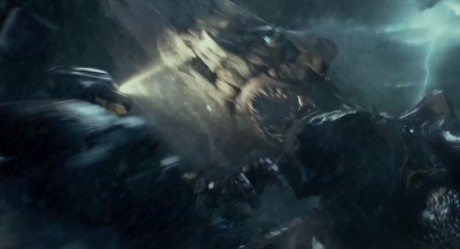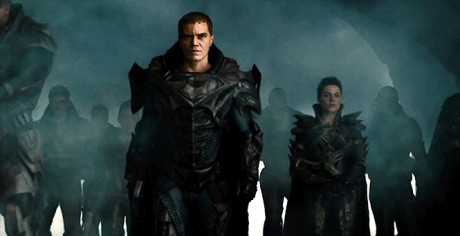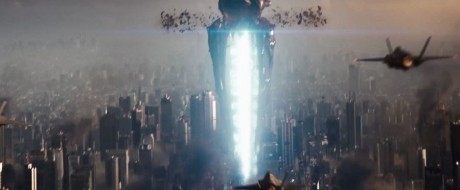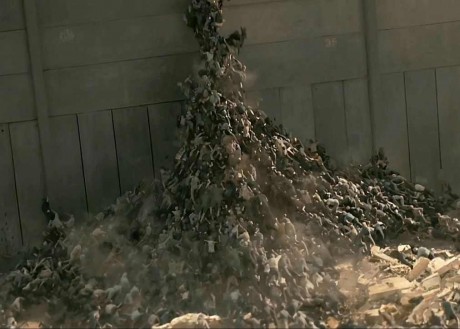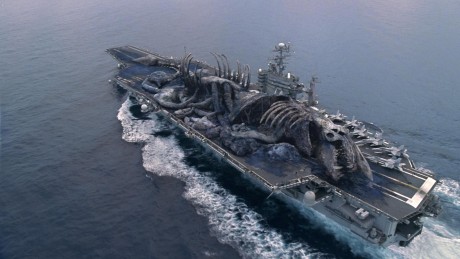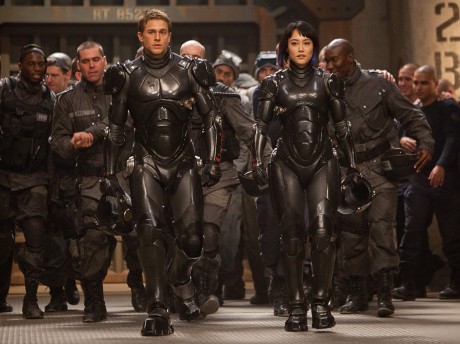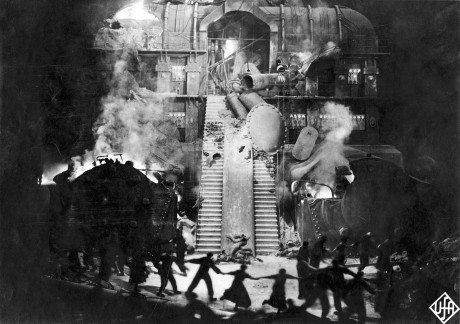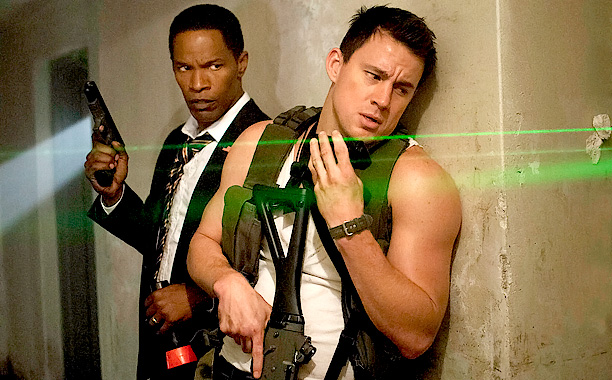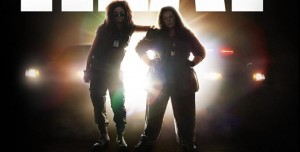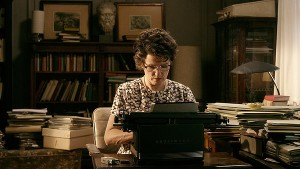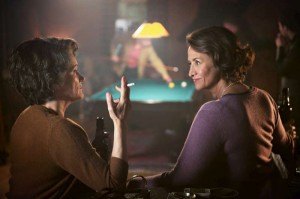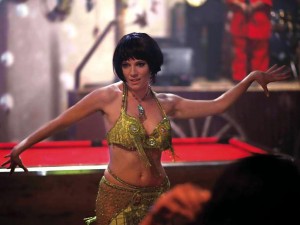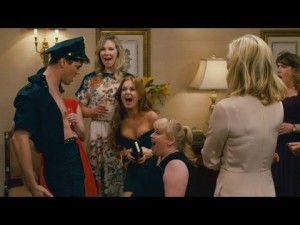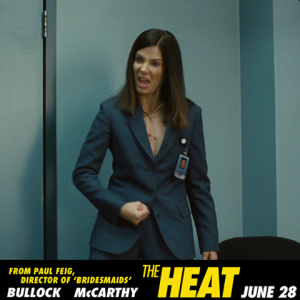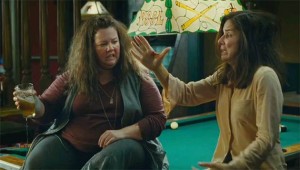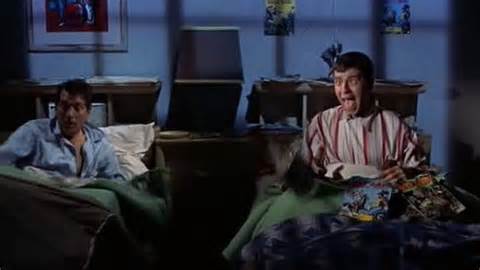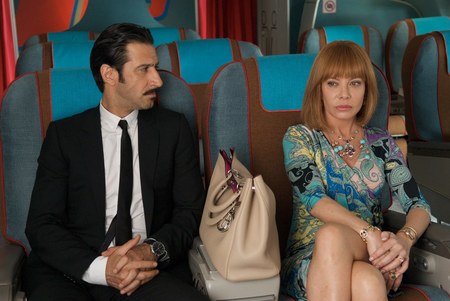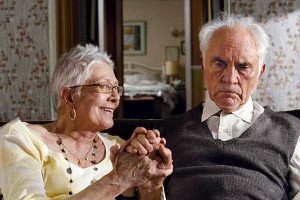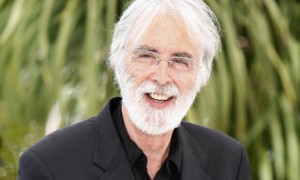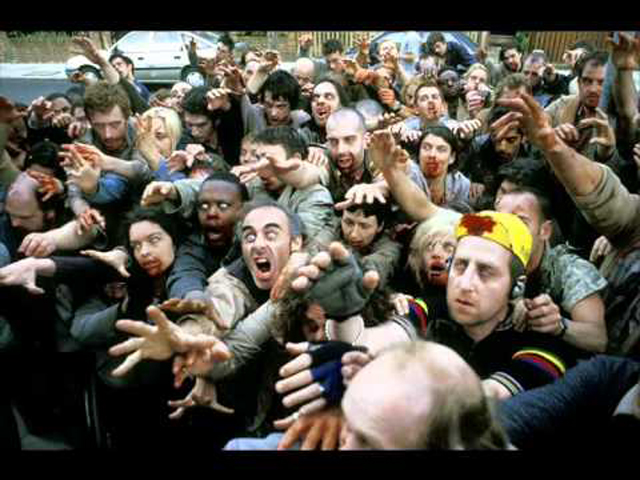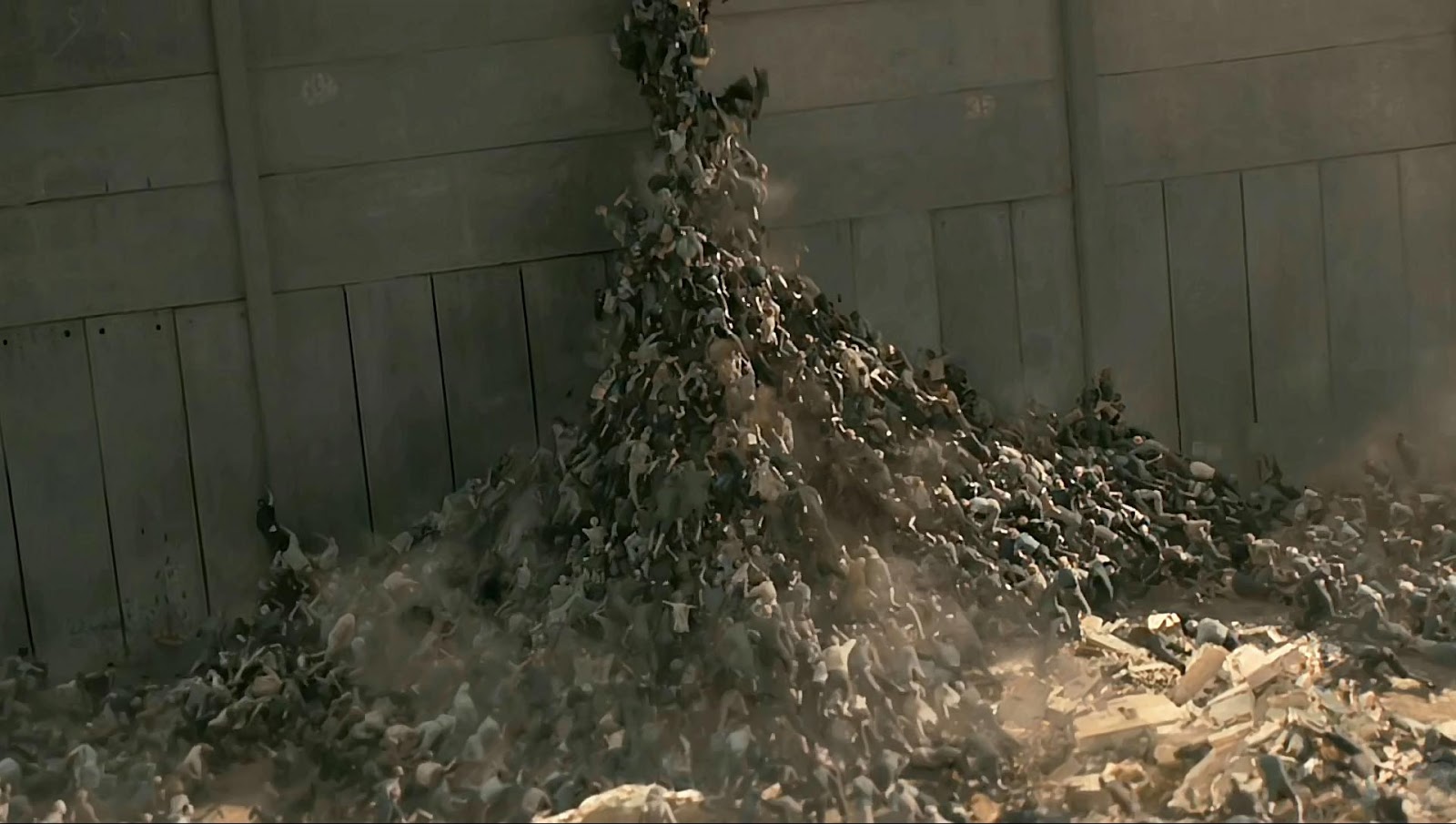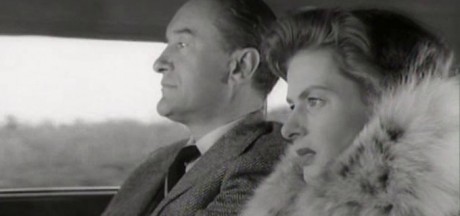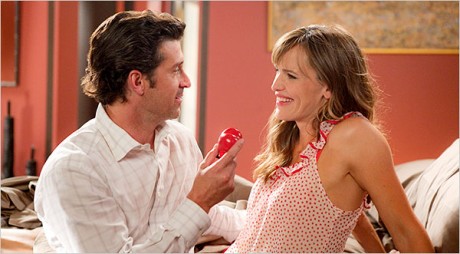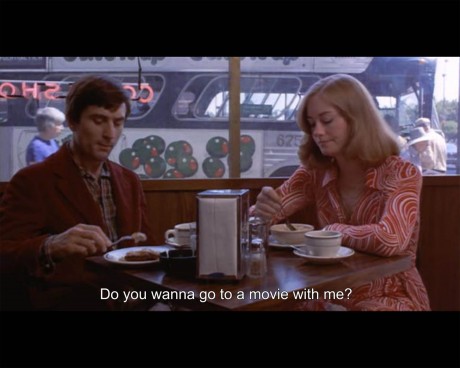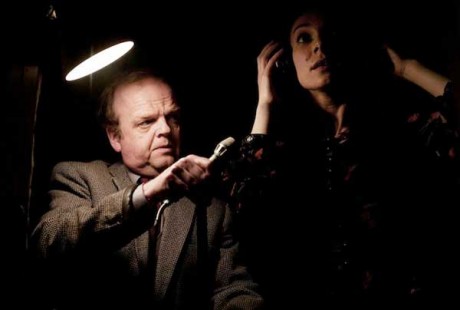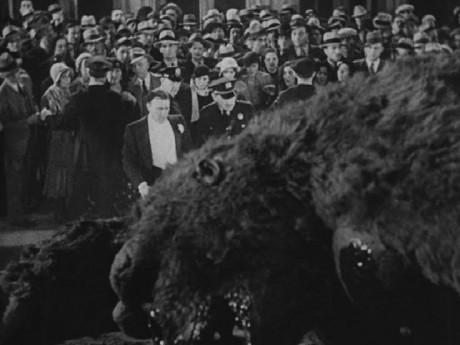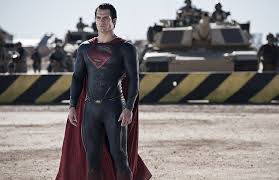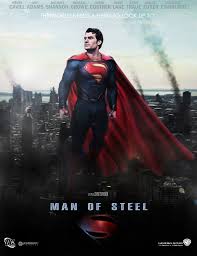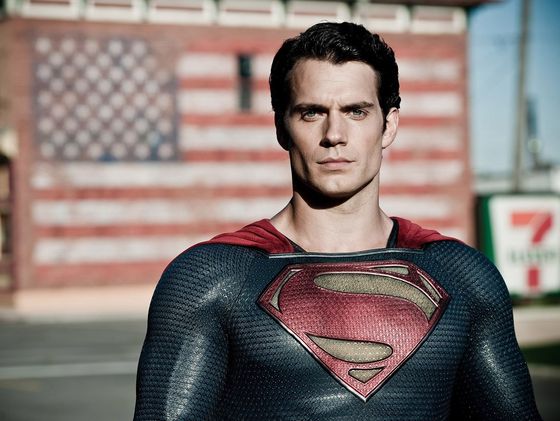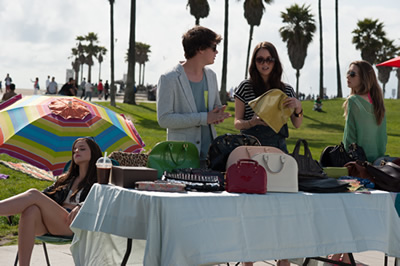Having just been overstimulated by Guillermo Del Toro’s “Pacific Rim,” I think I’ll settle down a bit by comparing it to the other models of catastrophic destructiveness posed by the summer movies so far.
But first it occurred to me while that with its swirling, smashing, and hard-to-distinguish underwater action, an immersion that at times has the hypnotic effect of staring into a washing machine,
“Pacific Rim” looked a lot like Lucien Castaing-Taylor and Verena Paravel’s, avant garde documentary about a fish trawler, “Leviathan,”
though with a $180 million budget. Or like “Transformers,” though with irony, wit, subtlety, and a twisted sense of the absurd. I don’t think Michael Bay would have, say, the poetic eye to show a tiny girl in blue cowering in the ruins of Tokyo as seen from the point of view of a robot as tall as a skyscraper. Spielberg maybe, though the girl in red in “Schindler’s List” loses points for self-conscious artiness and manipulation.
Be that as it may, how does “Pacific Rim” measure up to the summer’s other blockbusting blockbusters? Here are some comparisons,
In “Man of Steel,” the bad guys are, literally, supermen, the ubermenschen posited by Nietzsche and embraced by the Nazis and just about every other morbidly adolescent, narcissistic power freak up to and including neocons besotted by Ayn Rand. Decked in cool, black, latter-day SS regalia,
these refugees from Krypton unleash a 90 minute smash-athon as they prepare to terra-form our world to their liking before wiping out the indigenous inhabitants. Only another super being, Clark Kent /Kal-el /Superman, from the same alien race, can save us. Mere untermenschen, we puny humans can only cower and wait for the outcome of the titanic struggle.
Body count? Though no actual deaths are depicted, you’ve got to think that wiping out both Metropolis and Smallville is going to leave a mark.
On the bright side, though, Kal-El (or whatever he goes by) does rescue Lois Lane from a nasty fall.
A fascist elite also causes trouble in Roland Emmerich’s “White House Down,” though in this case they’re coming from the inside, not from outer space. A conspiracy of traitors, abetted by nutters, nihilists, and neo-Nazis, more or less turn the powers of the executive branch against itself. Coming to the rescue is the forgotten man of our day, the middle class schlump, who also, fortunately, happens to have elite skills from his time served in the Special Forces. And then there is the ultimate weapon, a brave little girl waving an American flag on the White House lawn as rockets glare redly and bombs burst in air and the harried President wields an RPG from the back of an armored limo.
Casualties and damage assessment: the Capitol bites the dust in spectacular fashion, and the White House is not looking good either. Plus the Secret Service is pretty much wiped out, as well as a few Seal teams and other military assets. The collateral damage among gawkers and hapless civilians is not so bad – again, we don’t see any actual carnage, but the bomb in the Capitol atrium alone must have taken out a few busloads of tourists.
In “World War Z,” (check out Henry’s shrewd assessment here) the situation is somewhat reversed. Here, the elite are the good guys, their skills and intelligence the last hope of the human race, and the hoi polloi, the horde of lumpen consumers as represented by the rabid zombies, are the problem. Complicating matters is the fact that you can change from endangered smart guy to mindless, angry consumer with a single bite, the equivalent in real life of an extended exposure to Fox News. Death toll? Billions, I’d guess,
with piles and piles of corpses, either ambulatory or burnt to a crisp. But do zombies really count as dead people when you kill them the second time?
Finally, we arrive at “Pacific Rim,” which combines many of the above elements but with the added madness of Del Toro’s chimerical brilliance and fallen Catholic world view. The Kaiju,
the giant beasts from another dimension that are laying waste to the planet, are an homage not just to Godzilla and the old guy-in-a-rubber-suit goliaths of Toho Studio, but also draw on primordial behemoths like H.P. Lovecraft’s Cthulhu (Del Toro agreed to direct this film only after his hope of adapting Lovecraft’s “In the Mountains of Madness” faded), as well as the ancient world-destroyers of pagan myths and the Bible, especially the book of Revelations.
The peril is not just cataclysmic, but apocalyptic, which is what the leader of the human resistance, who goes by the loaded name of Stacker Pentecost (Idris Elba),points out in an otherwise uninspiring speech rallying the troops. A kooky pair of scientists (played by Charlie Day and Burn Gorman in hilarious, hyperactive performances that almost make up for the total lack of personality of the rest of the cast) go on to explain how these creatures have been sent to our plane of existence by a predatory race seeking to eradicate the locals so they can move in (shades of “Man of Steel”). And, in fact, humans have done a lot of the work for them, as global warming has already transformed the environment into something more to the invaders liking.
Well, it all sounds a little clunky to me, sending in monsters to do the job any self-respecting aliens would enjoy doing themselves. Equally unwieldy is the human countermeasure of creating “Jaegers,” monumental humanoid robots operated by mind-melding humans in a kind of ultimate Wii video game. I mean, is punching the Kaiju out more effective than a couple of tactical nukes? But these gimcracky devices do allow Del Toro to insert a subversive subtext, or at least according to my tortured reading of the film.
Once again, the potential salvation of the planet lies in the hands of an elite – the uniquely talented pilots of the Jaeger. They’re regarded by the public as rock stars, doing talk shows and endorsement deals, and they sure look cool because in this movie it’s the good guys, not the evil invaders, who get to wear the sharp-looking, crypto-Nazi duds.
They also have the talent to meld minds, entering a state of “drift,” a psychological swirl of mutual memories, by which they bond with each other and with their machines.
As with the technology in “Avatar,” this process is a video gamer’s dream, allowing any nerd to plug into a system that lets you grab, say, a beached ocean liner, or whatever else is handy, and knock around some monsters. They’re like Ripley suited up in the loader in “Alien” doing battle with the alien queen, except the experience is about $100 million in special effects bigger and better.
However, there is a downside. For one thing, the Jaegers’ titanic battles with the Kaiju have the opposite of the intended effect – the more successful they are, the more formidable the foe becomes, increasing in size and number.
Secondly, melding with the machine takes an insidious toll on the human operators, reducing them to components; despite their superstar status, they are just cogs in the machine. Becket, for example, the ostensible protagonist, is pretty much a cipher. It only takes a few seconds of his “drift” flashback montage to reveal all the cliches that make up his character. Nor does he get much more interesting when he quits the Jaegers after a bad experience and joins the masses who are laboring on an ill-conceived “wall of life” designed to keep the Kaiju out. I was hoping he might get more cynical and down-and-out, giving up the Jaegers, say, for Jaegermeister…
As it is, though, Becket and the others serve Del Toro’s purpose, which is not to detract from the magnificent machines and the stupendous Jaeger vs. Kaiju battles. Del Toro doesn’t need characters to develop his theme of dehumanization when the f/x, set designs, imagery, and mise-en-scene convey it with such spectacular impact. In the world of “Pacific Rim,” everything is retro and broken down and crummy; it’s a place where the human spirit has succumbed to the regimentation of an inhuman, mechanical universe.
The monochrome masses of the lumpen poor in the crowd scenes, the Gothic caverns of the Jaeger hangars, and the big rusty doors, enormous machine fragments, and other greasy detritus lying around evoke the dismal “desert of the real” of “The Matrix.”
At other times the settings seemed straight out of “Metropolis”
and “Modern Times,”
silent classics about the perils of an industrialized society.
Or, as mentioned above, they resemble the documentary “Leviathan,” in which a factory-like fishing trawler takes on the aspect of a Moloch-like devourer. As horrific as the sea monsters are in “Pacific Rim, they are only the distorted reflections of the inhuman giants that oppose them.


